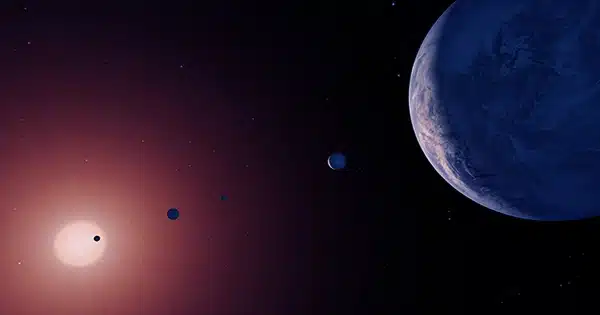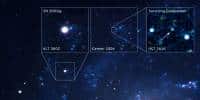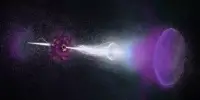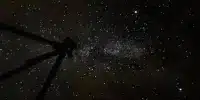A study led by researchers at the Leibniz Institute for Astrophysics Potsdam (AIP) has used cutting-edge numerical simulations to produce the first systematic assessment of the characteristics of stellar winds in a sample of cold stars. They discovered that magnetically active stars generate more strong winds. These winds make it difficult for planetary atmospheres to survive, which has an impact on whether these systems are potentially habitable.
The sun is one of the universe’s most common stars, also referred to as “cool stars.” F, G, K, and M-type stars fall into different groups based on their size, temperature, and brightness. The sun is a grade G star, which is an average star. Category F stars are brighter and bigger than the sun, but category K stars are a little bit smaller and colder. The M stars, also called “red dwarfs” because of the hue of the majority of their light, are the smallest and faintest stars.
In addition to light, the sun also continuously releases a stream of particles known as the solar wind, according to satellite data. These winds interact with the planets of the solar system, including Earth, as they move across interplanetary space. This interaction is what causes the stunning aurora show that can be seen close to the north and south poles. The steady planetary atmosphere can be eroded away by strong winds, as happened on Mars, therefore they could also be dangerous.
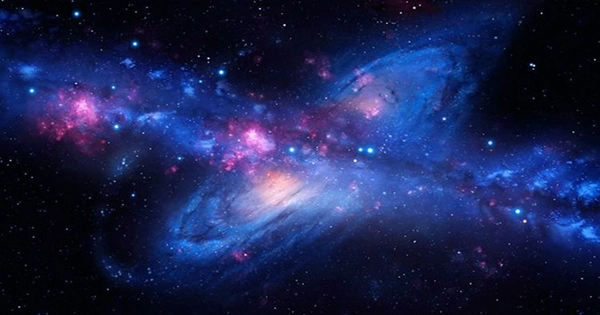
The solar wind is well understood, in part because of missions like Solar Orbiter, while other cold stars are not as well understood. We are only able to investigate the impact of these stellar winds on the thin gas that fills the space between stars in the galaxy because we are unable to directly observe these stellar winds. This method is only appropriate for a small number of stars and has a number of drawbacks. This encourages the use of computer simulations and models to forecast the various star wind parameters without the need for astronomers to make direct observations.
In this context, Cecilia Garraffo of the Center for Astrophysics at Harvard & Smithsonian has worked with student Judy Chebly, scientist Dr. Julián D. Alvarado-Gómez, and section head Professor Katja Poppenhäger to perform the first systematic study of the stellar wind properties predicted for F, G, K, and M stars.
They accomplished this using numerical simulations that were powered by the observed large-scale magnetic field distribution of 21 well-observed stars, one of the most complex models currently on the market. The Leibniz Rechenzentrum (LRZ) and AIP’s supercomputing centers were used to run the simulations. The research results are presented in the Monthly Notices of the Royal Astronomical Society publication.
The scientists looked studied how the gravitational pull, magnetic field strength, and rotational period of the stars affect the velocity or density of the wind. The findings, which include a thorough analysis of the stellar wind characteristics across spectral types, point to the necessity to reevaluate earlier predictions of stellar wind velocities when calculating the corresponding mass loss rates from observations. Additionally, the simulations enable the estimation of the anticipated size of the Alfvén surface—the line separating the star’s stellar wind and corona.
This knowledge is essential to determining if a planetary system may be susceptible to intense magnetic star-planet interactions, which can happen when a planet’s orbit partially or totally enters the Alfvén surface of its host star.
Their findings suggest that stars with larger magnetic fields than the sun have quicker winds. In some situations, star wind speeds can be up to five times higher than the average solar wind speed of 450 km/s. The study determined how strong the winds of these stars are at the so-called “habitable zones,” which are defined as the orbital distances at which rocky exoplanets might sustain surface liquid water under Earth-like atmospheric pressure.
They discovered softer wind environments near F and G-type stars, similar to what Earth experiences around the G-type sun, and increasingly harsher wind environments surrounding K and M-type stars. Such powerful star winds have a significant impact on any conceivable atmosphere the planet may have.
This behavior has been widely studied in solar physics between rocky planets and the sun, but not in exoplanetary systems. This necessitates stellar wind estimations in order to examine dynamics analogous to those observed between solar winds and planetary atmospheres. This study is significant in the perspective of habitability because information on the stellar wind was previously unknown for F to M main sequence stars.
The research given in this study was conducted on 21 stars, but the findings are generic enough to be extended to additional cold main sequence stars. This study sets the path for further research into stellar wind observations and their impact on planetary atmosphere degradation.
